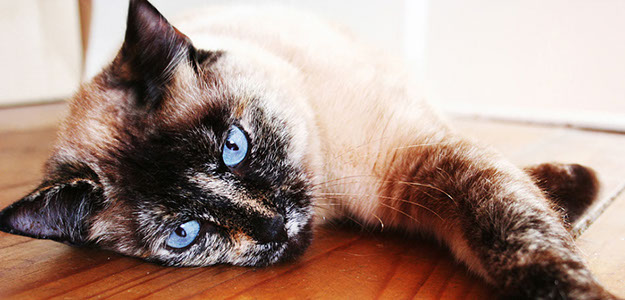According to the ASPCA, one in every 10 cats will exhibit inappropriate elimination in his or her lifetime. This lapse in litter box use is most often due to a common problem or circumstance and can therefore usually be corrected. It is important, however, to consult a veterinarian in order to identify the problem and rule out a medical condition.
Some of the most common (non-medical) reasons for inappropriate elimination include:
1. The litter box is not cleaned often enough.
2. Your cat does not like the brand or type of litter. Often this can be determined to be the case if your cat is not digging in the litter, if he or she is shaking their paws after leaving, trying to eliminate while standing on the edge of the box or running out of the litter box immediately after using it.
3. Your cat does not like the scent of the perfumed litter.
4. The litter is too shallow. The litter should be kept at a constant depth of at least 4 inches.
5. The location of the litter box has been changed. If you move the litter box, your cat may continue to eliminate in the original location, or he or she may select another spot and continue to use that area.
6. The old litter box is removed and replaced with a new one.
7. Too harsh of a cleaning product has been used to clean out the litter box.
8. The location of the litter box is too busy or not private enough for your cat. High traffic areas and locations near loud appliances or other equipment are not recommended.
9. The home is too large for just one litter box or there are too many cats and not enough litter boxes. Ideally, your home should have one litter box for every cat in the house, plus one.
10. Your cat is kept from using the litter box by another animal in the house.
11. Your cat is stressed by a change in routine or environment, including a new baby, new furniture, work schedule changes, vacations, overnight guests or a move.
12. Your cat has developed a litter box aversion. This can occur if he or she experiences an unpleasant event while in the litter box. This can include pain associated with urinary tract inflammation or constipation, or being frightened by a dog or another cat.
13. The use of box liners, hoods and plastic underlay is deterring the cat from using the box.
It is important to note that inappropriate elimination and territory marking are completely separate issues with different characterizing behaviors.
What Can I Do to Address Inappropriate Elimination?
First, it is important to rule out medical problems by consulting your veterinarian. If your cat’s inappropriate elimination is due to a behavioral problem there are several ways of trying to address the issue:
1. Determine what cat litter your cat prefers. Present your cat with different litter choices in order to discover if there is a product that he or she prefers over the present litter you are using.
2. Make the litter box as attractive as possible. Scoop it out daily and clean the entire box every week or two with mild soap and water, making sure to rinse thoroughly.
3. Ensure that the litter box is large enough for the cat. It should be approximately 1 1/2 times the length of the cat and sufficiently wide enough for the cat to easily turn around.
4. Make sure there are enough litter boxes in the house (one per cat, plus one) and that they are spread around the house.
5. Consider the litter box location. Cats don’t like to be disturbed while in the litter box, so ensure that litter boxes are in quiet, low trafficked areas. As well, be sure to keep litter boxes away from your cat’s food and water dishes.
6. Try to discourage your cat from using the inappropriate area for elimination. For instance, place a litter box in that area then gradually, once your cat is using the box consistently, move the box, inch by inch, to a more appropriate area. As well, you could try placing your cat’s food or toys over the area. Another option, if possible, is to make the inappropriate area inaccessible, at least for a while, so that you can retrain the cat to use the litter boxes. If this is not practical, try to create an aversion to the area by placing tinfoil, heavy plastic, deodorizers, or cologne in the area. Please note: residual odor in the inappropriate area can attract your cat back to that area. It is therefore important that it be thoroughly cleaned and any odor removed.
Image by martie1swart



